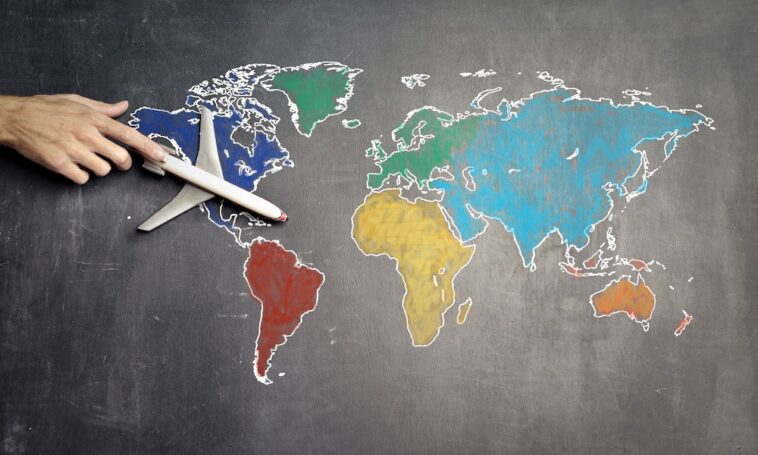The Role of EdTech, Education is a basic human right and a fundamental tool for breaking the cycle of poverty and ensuring social and economic development. Unfortunately, millions of children around the world are still being denied access to quality education. According to UNESCO, approximately 258 million children are not enrolled in school, and more than half of them are girls. The COVID-19 pandemic has further exacerbated this problem, with school closures affecting more than 1.5 billion students worldwide. However, the emergence of EdTech has created new opportunities for addressing the global education gap. In this article, we will explore the role of EdTech in providing equitable and accessible education to all.
The Role of EdTech, EdTech refers to the use of technology in education to improve teaching and learning processes. It encompasses a wide range of tools and applications, including online learning platforms, educational software, digital textbooks, gamification, and virtual and augmented reality. EdTech has the potential to transform education by making it more engaging, interactive, and personalized. It also enables students to learn at their own pace and provides teachers with valuable data and insights into student performance.
Read More: The Ethics of EdTech: Balancing Innovation and Privacy
Explore the Contents
The Global Education Gap
The Role of EdTech, The global education gap refers to the disparity in access to quality education between developed and developing countries. While developed countries have well-funded and high-quality education systems, developing countries often struggle with inadequate infrastructure, insufficient funding, and a shortage of trained teachers. This results in low enrollment rates, high dropout rates, and poor learning outcomes. The education gap is also compounded by other factors such as poverty, gender inequality, and cultural barriers.

The Impact of EdTech on the Education Gap
The Role of EdTech, EdTech has the potential to bridge the education gap by providing access to quality education to marginalized and underserved communities. Online learning platforms and digital textbooks can reach students in remote and rural areas, where traditional classroom education is not feasible. EdTech can also address the shortage of qualified teachers by providing teacher training and support. Additionally, gamification and other interactive learning tools can make education more engaging and appealing to students, leading to better learning outcomes.
Examples of EdTech in Action
The Role of EdTech, Several EdTech companies and organizations are working towards providing equitable and accessible education to all. For example, Khan Academy is a non-profit organization that offers free online courses in a wide range of subjects, including math, science, and humanities, which can be accessed by anyone with an internet connection. Another example is Bridge International Academies, which uses a franchise model to provide low-cost, high-quality education to students in Kenya, Uganda, Nigeria, and India. Bridge’s innovative approach combines traditional classroom teaching with technology to deliver personalized and data-driven instruction.
Challenges and Limitations of EdTech
The Role of EdTech, While EdTech has the potential to revolutionize education, there are several challenges and limitations that must be addressed. One of the biggest challenges is the digital divide, which refers to the gap between those who have access to technology and those who do not. In many developing countries, a lack of infrastructure and resources makes it difficult to implement EdTech solutions. Another challenge is the need for trained teachers and support staff who can effectively use technology in the classroom. Additionally, there is a risk of over-reliance on technology, which can lead to a loss of human interaction and personalized instruction.

The Role of EdTech, Conclusion
The Role of EdTech, The global education gap is a complex problem that requires innovative and sustainable solutions. EdTech has the potential to provide equitable and accessible education to all, but it must be implemented carefully and with consideration for the unique challenges and needs of each community. By harnessing the power of technology and combining it with human expertise and support, we can create a more inclusive and effective education system that benefits everyone.
Read More: Top 10 Characteristics of Connected Educator
FAQs
- What is the digital divide, and how does it impact EdTech?
The digital divide refers to the gap between those who have access to technology and those who do not. In many developing countries, a lack of infrastructure and resources makes it difficult to implement EdTech solutions, leading to unequal access to education.
- How can EdTech address the shortage of qualified teachers?
EdTech can provide teacher training and support, enabling educators to use technology effectively in the classroom and improve student outcomes.
- What is gamification, and how does it enhance learning?
Gamification refers to the use of game design elements in non-game contexts, such as education. By incorporating elements like rewards, competition, and feedback, gamification can make learning more engaging and effective.
- Is EdTech a substitute for traditional classroom teaching?
No, EdTech should be used as a complement to traditional classroom teaching, not a substitute. The best approach combines technology with human expertise and support to provide personalized and effective education.
- How can we ensure that EdTech solutions are culturally relevant and appropriate?
EdTech solutions should be developed and implemented in collaboration with local communities and educators, taking into account cultural differences and unique learning needs. This will ensure that the solutions are culturally relevant and appropriate.



